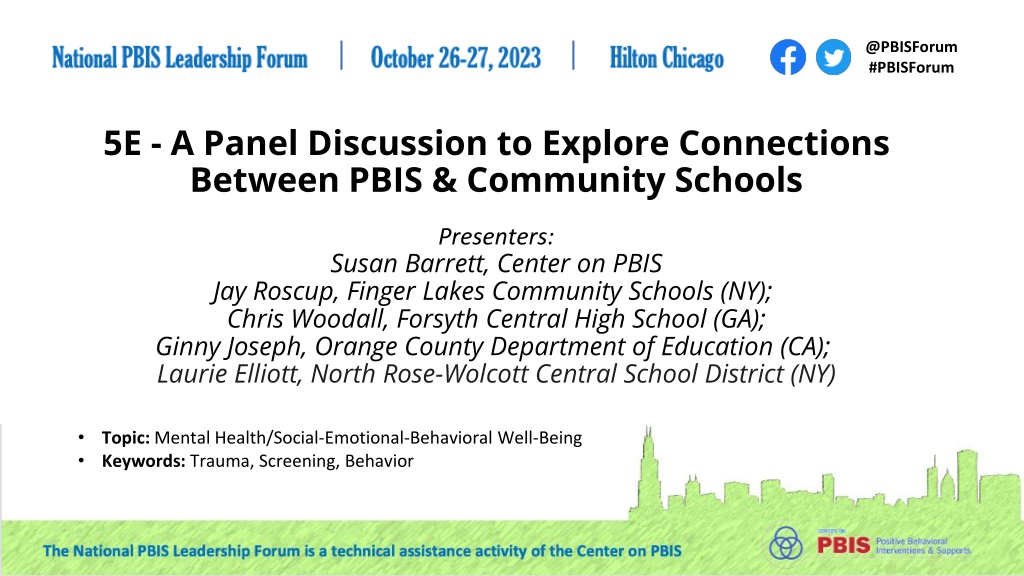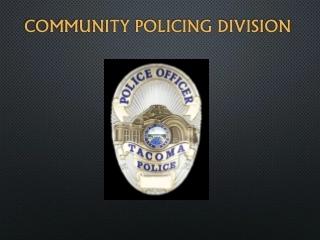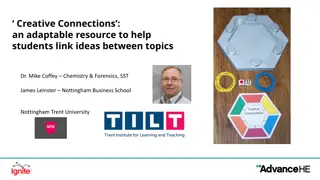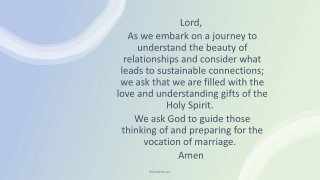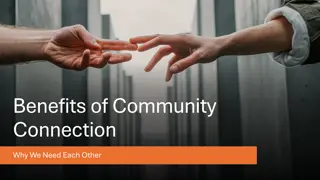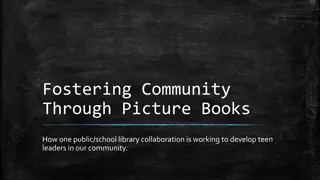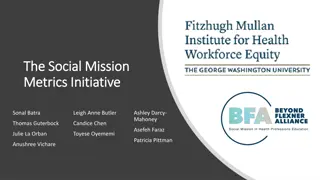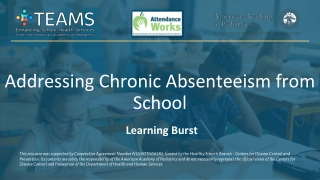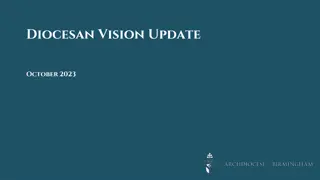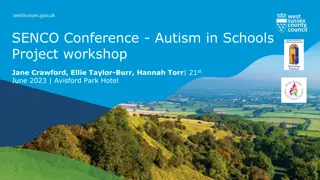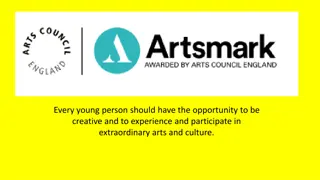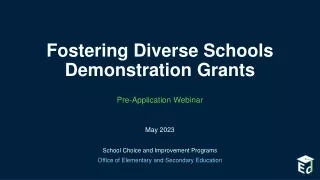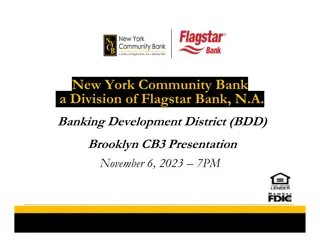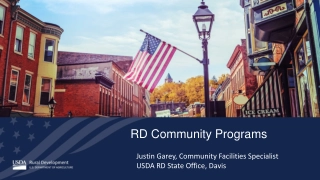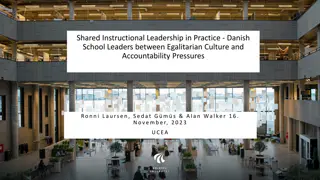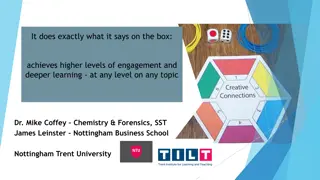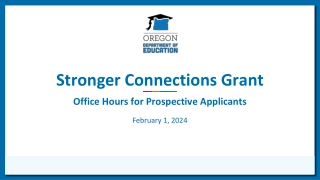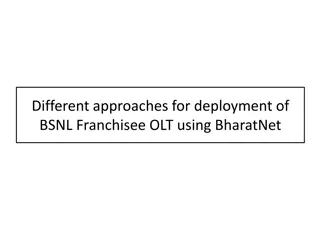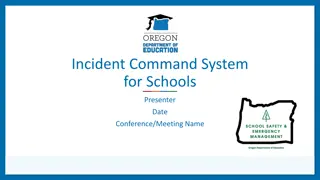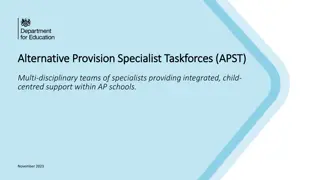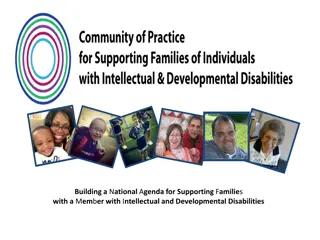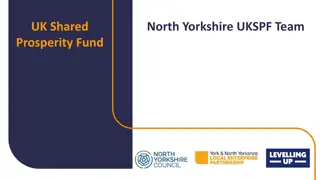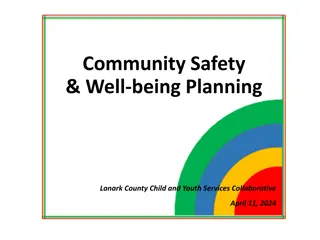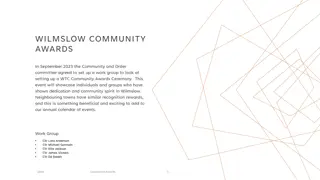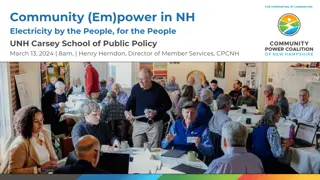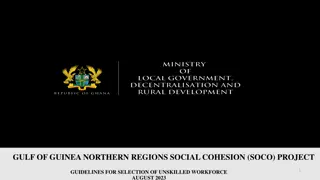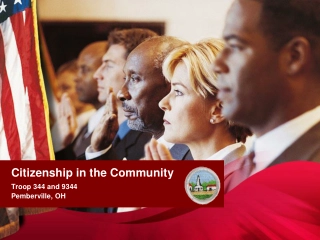Exploring Connections Between PBIS and Community Schools
Join the panel discussion to explore the connections between Positive Behavioral Interventions and Supports (PBIS) and Community Schools, focusing on mental health, social-emotional-behavioral well-being, trauma, screening, and behavior. Learn from presenters from New York, Georgia, and California about the effectiveness of PBIS and Community Schools, identifying similarities and differences, and experiences from sites implementing both frameworks.
Download Presentation
Please find below an Image/Link to download the presentation.
The content on the website is provided AS IS for your information and personal use only. It may not be sold, licensed, or shared on other websites without obtaining consent from the author. Download presentation by click this link. If you encounter any issues during the download, it is possible that the publisher has removed the file from their server.
Presentation Transcript
@PBISForum #PBISForum 5E - A Panel Discussion to Explore Connections Between PBIS & Community Schools Presenters: Susan Barrett, Center on PBIS Jay Roscup, Finger Lakes Community Schools (NY); Chris Woodall, Forsyth Central High School (GA); Ginny Joseph, Orange County Department of Education (CA); Laurie Elliott, North Rose-Wolcott Central School District (NY) Topic: Mental Health/Social-Emotional-Behavioral Well-Being Keywords: Trauma, Screening, Behavior
Learning Objectives Join panelists from New York, Georgia, and California to explore how their states and districts are engaging with both initiatives to meet social emotional and behavioral needs of youth. 1. Identify similarities and differences in PBIS and Community Schools 2. Define evidence of effectiveness supporting use of PBIS and Community Schools 3. Learn about experiences from sites engaged in using both frameworks National PBIS Leadership Forum
Panel Introduction Ginny Joseph, Orange County Department of Education (CA); Jay Roscup, Finger Lakes Community Schools (NY); State Laurie Elliott, North Rose- Wolcott Central School District (NY) Regional or District Team County District Leadership Team Chris Woodall, Forsyth Central High School (GA); School Classroom
01. Defining Terms PBIS/MTSS/ISF Community Schools Whole Child
PBIS: A Continuous Improvement Framework We organize our teams and resources to be effective, efficient and we continuously examine our needs We make sure our kids are known, feel connected, valued and get help early. We invest in what is likely to work for our students We invest in our staff so they can support ALL students We make sure we are implementing well as we review student outcomes We continuously adjust based on strength and needs and improve in partnership and service with our families, youth, staff and community members.
PBIS is NOT a curriculum adoption, it is about Transforming the System -Dr. Kurt Hatch Inclusion Is NOT a strategy to help people fit into the systems and structures which exist in our societies. It is about transforming those systems and structures to make it better for everyone. Inclusion is about creating a better world for everyone. Diane Richler (Cobb and Krownapple, 2019)
What are the ways we are enhancing PBIS? Interconnecting PBIS + MH (ISF) =PBIS 2.0 Effective teams that include youth, family and community mental health providers (expand opportunity and access for members who historically have been excluded) Data-based decision making that include school data beyond ODRs and community data Formal processes for the selection & implementation of evidence-based practices (EBP) across tiers with team decision making and customized to fit culture/context/strengths/needs of community. Early access through use of comprehensive and equitable approach to screening, which includes uncovering strengths, story & internalizing and externalizing needs Rigorous progress-monitoring for both fidelity & effectiveness of all interventions regardless of who delivers Ongoing coaching at both the systems & practices level for both school and community employed professionals (e.g., continuously examining the health of the system and the strengths and needs of the caregivers and helpers in the system)
Community Schools Essentials Community Schools Forward (2023)
What is Whole Child? .
Turn and Talk What is your experience and understanding of whole child framework?
02. What are the connections?
Jays current understanding enabling conditions as: - Points of Entry - Conditions that require caretaking - Places to come back to for alignment and renewal
Actionable Data Traditional School Data Office Referral Rates Attendance Rates (Students and Staff) Academic Data Graduation Rates Minor incident reports and instructional time Expanded School Data Nursing/School Counselor logs Referrals to school mental health provider vs. number of students who accessed services Teacher ratings of student social emotional behavior Prior referral to student study team Student, Staff, and family focus groups Family screener School Climate Data CHKS Data Community Data Demographic data for the school/neighborhood, community, and/or district Socio-economic status, free and reduced lunch rates Community Innovation Homelessness rates Incarceration rates Issues related to environmental changes and weather events Drug use/rate of drug overdoses Crisis center calls Issues related to family immigration status Green Spaces/Faith Based Partners Military deployment Interconnected Systems Framework
Working Smarter Questions School Based Teams Great work is being done in silos, but we need to be intentional about integration SEL PBIS/MTSS Wellness 1. Why does the team exist? What is School Improvement the intended outcome? Suicide Prevention Family Engagement 2. Who are the members? 3. What is the connection to the Leadership School Improvement Plan? Threat Assessment Trauma Informed 4. Are the practices/curriculum/ Restorative Practices initiative evidenced based? 5. Are youth, family, community Bully Prevention Equity included? Have shared power and Behavior voice? 6. Does the team get results? Attendance (fidelity and impact) UDL Discipline 7. Can teams be consolidated? Center on PBIS
Consolidate Your Teams- From 25 to 3 Expand your membership, Expand Your Data Expand Your Results Multidisciplinary Tier 1 Systems Team Youth/Family/Community Multidisciplinary Tier 2 Systems Team Youth/Family/Community Multidisciplinary Tier 3 Systems Team Youth/Family/Community Coordinates and monitors interventions for all students receiving individual interventions Ensures data-based selection of evidence-based practices for individual students Monitors the number of students receiving individual interventions Evaluates the number of students are responding to individual intervention Considers needs for additional staff PD and coaching as needed per aggregate data review of effectiveness Coordinates and monitors interventions for groups of students needing support beyond Tier 1 Ensures data-based selection of evidence-based practices for small groups of students Coordinates and monitors support for all students, all staff, and all settings Reviews aggregate data from both school and community to inform priorities/programming. Focuses on positive classroom systems and early identification of student needs across the school/community Monitors data to identify when and how to adjust system to meet the needs of whole school/community Develops decision rules for when a student receives additional supports/ interventions Click on the "Share" button on the top right corner in Canva and click on "More" at the bottom of the menu. Monitors and ensures timely access for students identified through data and/or request for assistance from student, family, or staff Reviews how many interventions are in place, how many students are supported through each intervention, and how many of those students are responding Center on PBIS
Panelists Questions What are the connections at state/region/district/school level that we need to consider? As we think of transforming the system, who needs to be at the table? How do we engage, invite and keep families/youth/community members as co- leaders/co-designers? How do we engage leaders who have the ability to make decisions related to funding/data systems/workforce development/alignment? How do we stay humble, curious?
Panelists Contact Information Susan Barrett, sbbarrett1114@gmail.com Ginny Joseph, vjoseph@ocde.us Jay Roscup, jroscup@flxcommunityschools.org Chris Woodall, f26877@forsyth.k12.ga.us Laurie Elliott, lelliott@nrwcs.org
Please Complete this Sessions Evaluation 10/27/2023 Session ID- 5E - A Panel Discussion to Explore Connections Between PBIS & Community Schools Four options, pick one! 1. Mobile App Click Take Survey" under the session description. 4. Direct Link Click the link provided in the email reminder you receive after your session ends. 3. Online Click on the link located next to the downloadable session materials posted online at: 2. QR Code Scan the code on this slide. www.pbis.org/conference-and- presentations/pbis-leadership-forum Evaluations are anonymous! We send reminder emails to all participants. After you submit each session evaluation, click the link to enter the gift card raffle!
